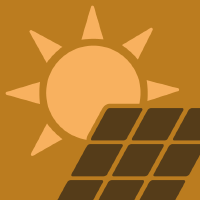Topic Menu
► Topic MenuTopic Editors


2. C-MAST - Center for Mechanical and Aerospace Science and Technologies, 6201-001 Covilhã, Portugal

2. C-MAST - Center for Mechanical and Aerospace Science and Technologies, 6201-001 Covilhã, Portugal
Solar Thermal Energy and Photovoltaic Systems, 2nd Volume
Topic Information
Dear Colleagues,
This Topic is a continuation of the previous successful Topic “Solar Thermal Energy and Photovoltaic Systems” Solar energy is a clean and reliable source of energy for the production of electric and thermal power to satisfy the increasing demand for power and simultaneously overcome the challenges posed by the climate-friendly environment that is required for the Earth’s sustainable development. The energy conversion efficiency of electric energy generation through photovoltaic (PV) panels is very low. Most of the radiation is converted into heat, which results in a higher operating temperature and a lower photovoltaic efficiency. On the other hand, solar thermal collectors (TCs) are widely used to supply hot water for residential, commercial, and industrial applications. In addition, thermal energy can be converted into electricity by the Seebeck effect using thermoelectric generators (TEGs). TEGs are reliable, robust, and environmentally friendly. Thus, the combination of PV, TC, and TE technologies can improve the performance of both electric and thermal energy generation. This Topic will focus on recent research accomplishments in, and the different approaches to, optimizing the operation, performance, efficiency, and feasibility of hybrid solar photovoltaic, thermoelectric, and thermal modules by experimental, numerical, or analytical techniques. It will also review the optimization and development challenges that need to be overcome in order to extend their effective spectrum range. Therefore, we invite you to contribute to this Special Issue with an original research or review article on a topic relevant to the further improvement of hybrid solar photovoltaic, thermoelectric, and thermal modules. Articles may describe innovative technical developments, present experimental, numerical modeling, case, or analytical studies, or assess the future prospects of and make suggestions on potential approaches to emerging technology solutions.
Prof. Dr. Pedro Dinis Gaspar
Prof. Dr. Pedro Dinho da Silva
Prof. Dr. Luís C. Pires
Topic Editors
Keywords
- hybrid
- solar
- photovoltaic
- thermoelectric
- thermal
- operation
- performance
- efficiency
- feasibility
- optimization
- development
- challenges
Participating Journals
| Journal Name | Impact Factor | CiteScore | Launched Year | First Decision (median) | APC |
|---|---|---|---|---|---|

Energies
|
3.0 | 6.2 | 2008 | 17.5 Days | CHF 2600 |

Materials
|
3.1 | 5.8 | 2008 | 15.5 Days | CHF 2600 |

Processes
|
2.8 | 5.1 | 2013 | 14.4 Days | CHF 2400 |

Solar
|
- | - | 2021 | 27.4 Days | CHF 1000 |

Sustainability
|
3.3 | 6.8 | 2009 | 20 Days | CHF 2400 |

MDPI Topics is cooperating with Preprints.org and has built a direct connection between MDPI journals and Preprints.org. Authors are encouraged to enjoy the benefits by posting a preprint at Preprints.org prior to publication:
- Immediately share your ideas ahead of publication and establish your research priority;
- Protect your idea from being stolen with this time-stamped preprint article;
- Enhance the exposure and impact of your research;
- Receive feedback from your peers in advance;
- Have it indexed in Web of Science (Preprint Citation Index), Google Scholar, Crossref, SHARE, PrePubMed, Scilit and Europe PMC.

